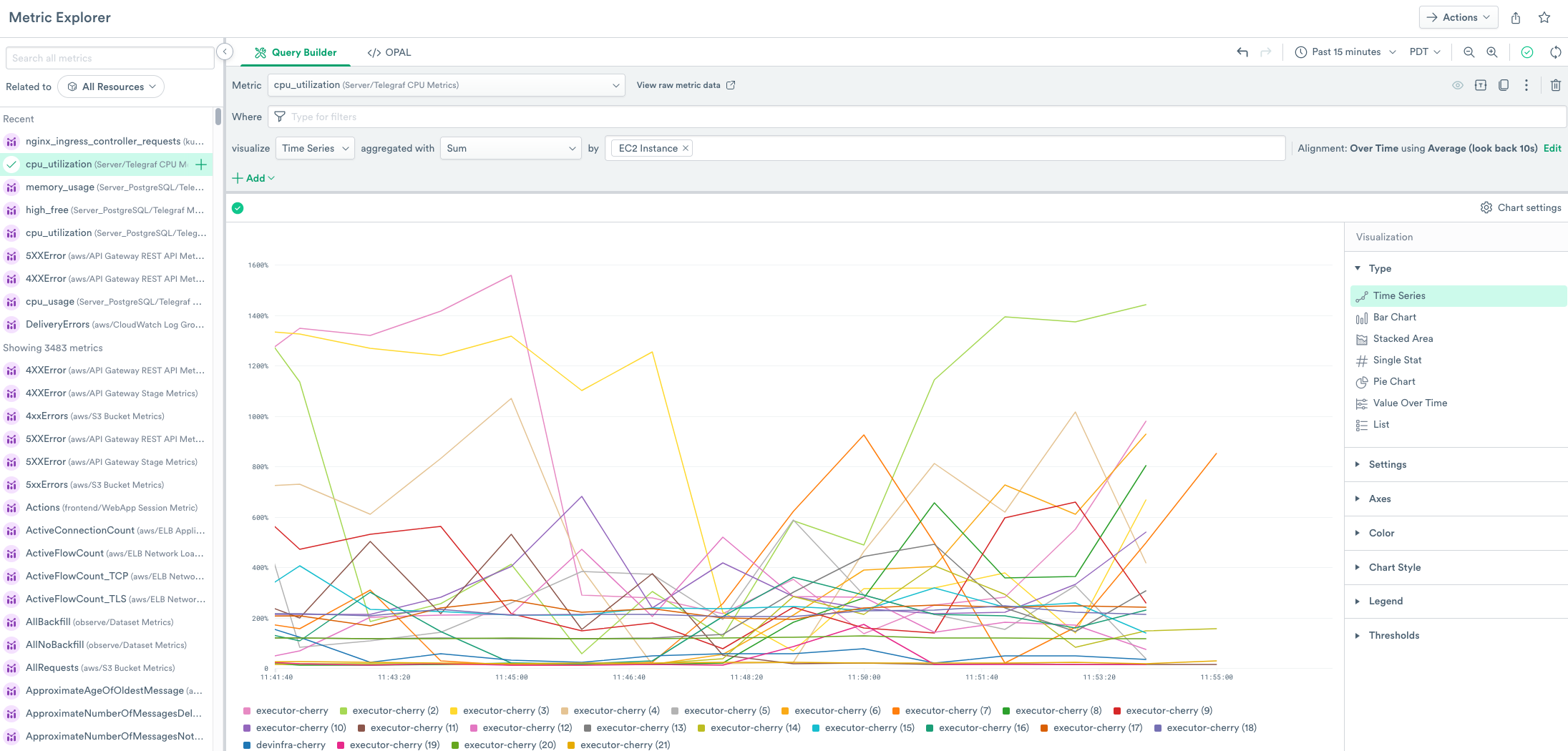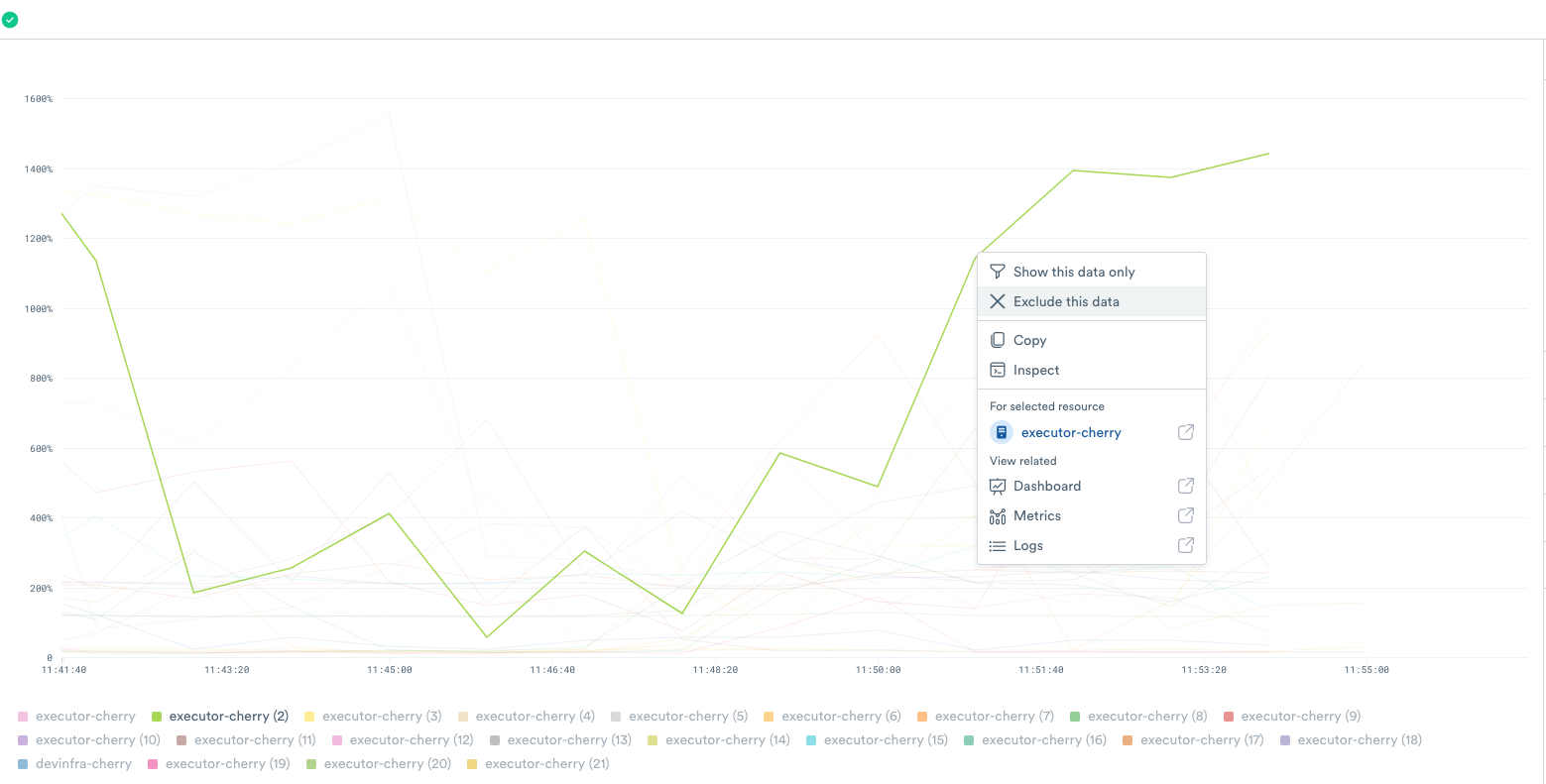Release Notes August 18, 2023¶
New Metrics Explorer¶
Use Metrics Explorer to build Query Expressions for metrics and display visualizations of your metrics data.
For more information about Metrics, see Introduction to Metrics.

Figure 1 - The Metrics Explorer Landing Page
You can also select a line in a Time Series visualization and display the following menu:

Figure 2 - Visualization Options
You can select from the following options:
Show this data only
Exclude this data
Copy
Inspect
Then for the selected resource, you can perform any of the following options:
Open the resource in a dataset
Create a Dashboard for the resource
View related Metrics
View related Logs
Metrics Expression Builder Updates¶
When using Metrics Expression Builder, expressions now use the LinkFieldID instead of the column name. This has the format, ^LinkFieldID.
OPAL Language Updates¶
topk_aggr¶
Description¶
Returns an approximation of the top K most frequent values in the input, along with their approximate frequencies.
The output contains an array of arrays. In the inner arrays, the first entry is the value in the input, while the second entry is its frequency. The outer array contains k elements, sorted by frequencies in descending order.
Return type¶
array
Domain¶
This is an aggregate function (aggregates rows over a group in aggregate verbs
This is a window function (calculates over a group of multiple input rows using windowing.
Categories¶
Usage¶
topk_agg( expr, k )
Argument |
Type |
Required |
Multiple |
|---|---|---|---|
expr |
any |
Required |
Only one |
k |
int64 |
Required |
Only one |
Examples¶
statsby top_names:topk_agg(name, 2), group_by(class)
Given the following input:
name |
class |
|---|---|
Jack |
A |
Joe |
A |
Alice |
A |
Alice |
A |
Tom |
B |
Joe |
B |
Kathy |
B |
Mike |
A |
Tom |
B |
It returns the following output:
class |
top_names |
|---|---|
A |
[[“Alice”, 2], [“Jack”, 1]] |
B |
[[“Tom”, 2], [“Kathy”, 1]] |
Note that if there is a tie in the last position the result can be non-deterministic. Any of the values with the same frequency may be included in the last position.
 documentation
documentation